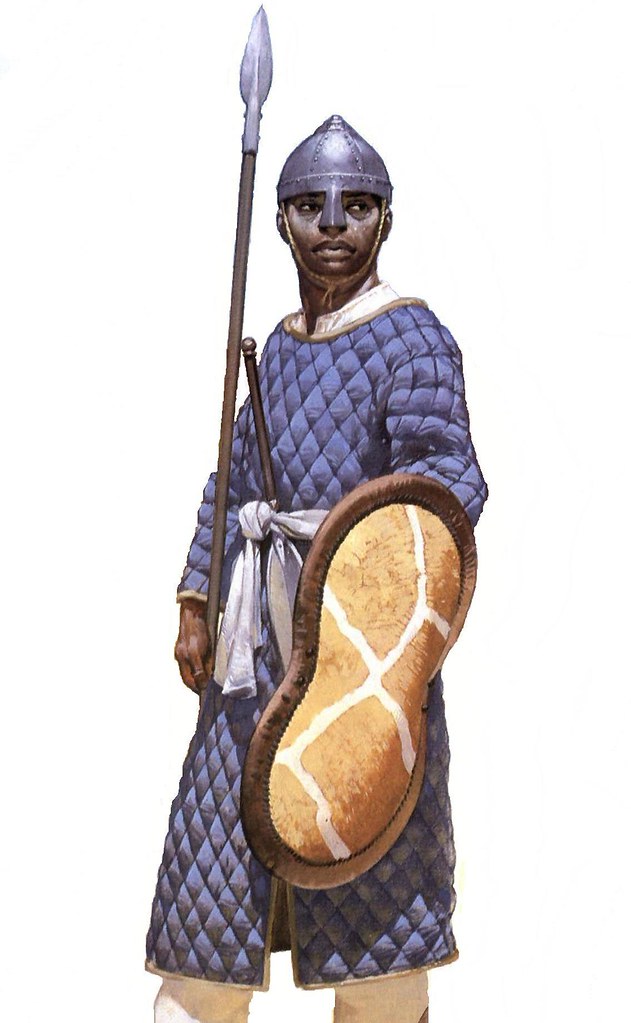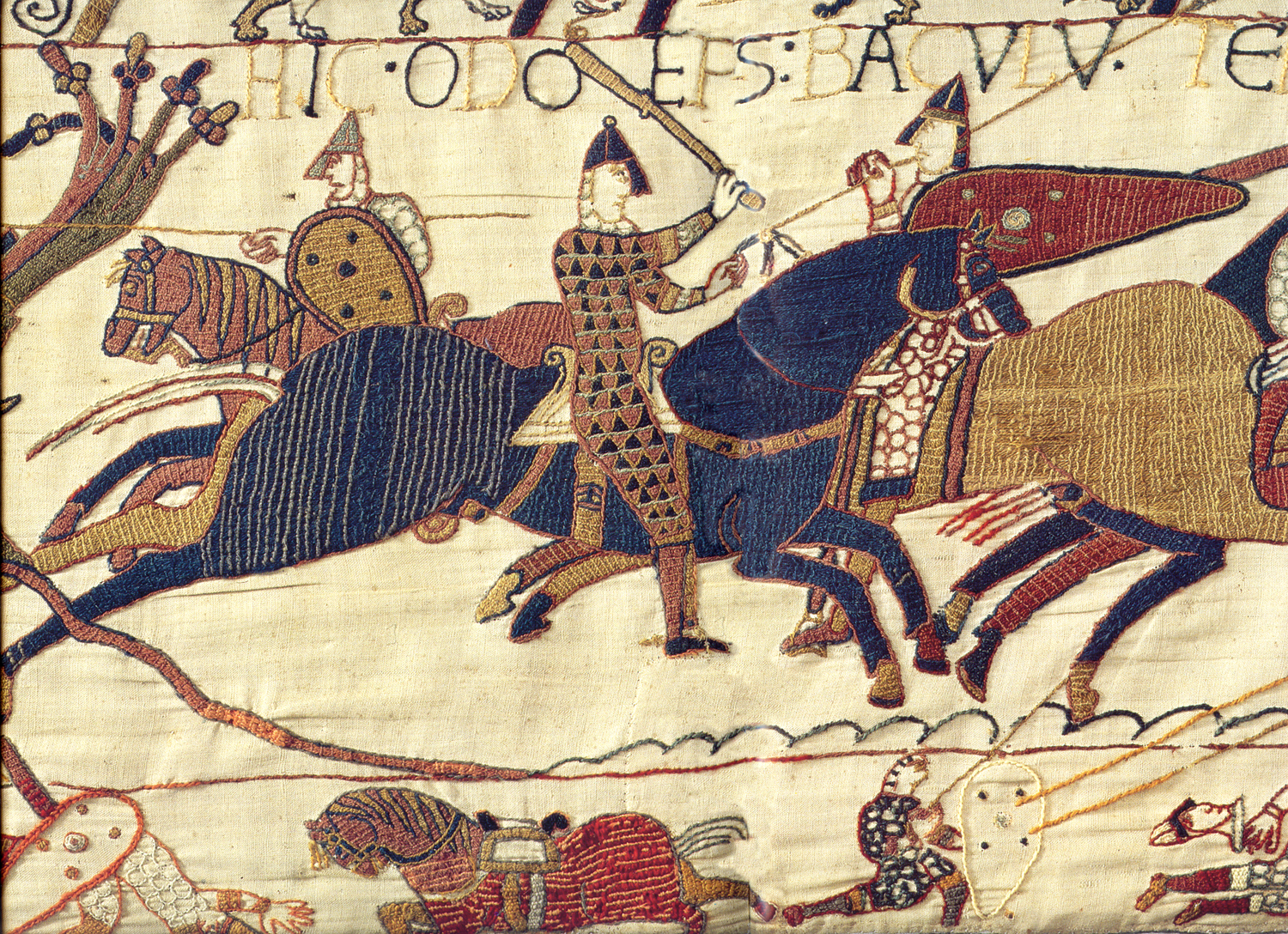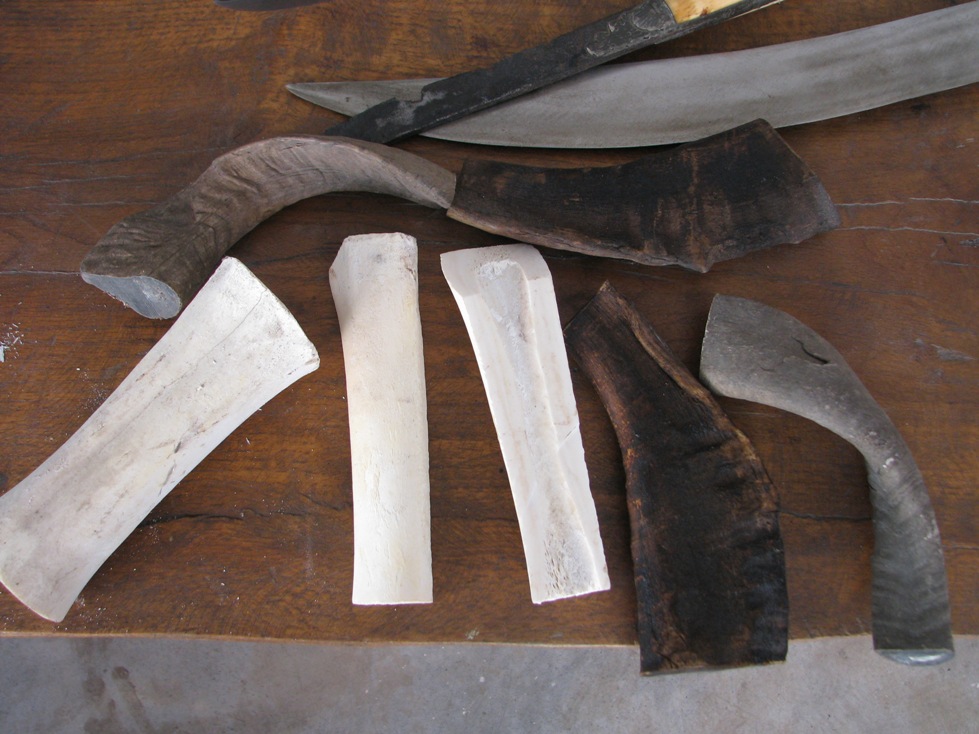Results 961 to 990 of 1480
-
2018-05-22, 08:11 PM (ISO 8601)Ogre in the Playground


- Join Date
- Feb 2013
 Re: Got a Real-World Weapon, Armor or Tactics Question? Mk. XXV
Re: Got a Real-World Weapon, Armor or Tactics Question? Mk. XXV
Really. Your telling me the main steels used for making armour in antiquity where not carbon steels?
 .
.
That said the low sheer strength could be a real issue with titanium armour. That said for ballistics and shrapnel titanium has been used for armouring, that said it probably wasn't a common alloy of titanium and as various steel alloys show what you alloy a metal with can really play with the properties.
Also yeah Titanium is really, really reactive at higher temperatures. And heating it further doesn't get the oxygen out. It's far from the only oddball metal like that we use. Magnesium alloy stand out. Pure magnesium is easy to ignite and will burn with water. For some to my mind unfathomable reason green energy car concepts have used magnesium based hydrogen storage as a methodology. Quite why anyone would want to combine two such wonderfully pyrotechnic substances as hydrogen and magnesium, (one of which burn in the main firefighting substance used worldwide), is beyond me, but it's been suggested at the very least, and there may even be a car or two on the roads with it.
-
2018-05-22, 08:41 PM (ISO 8601)Titan in the Playground


- Join Date
- Aug 2008
 Re: Got a Real-World Weapon, Armor or Tactics Question? Mk. XXV
Re: Got a Real-World Weapon, Armor or Tactics Question? Mk. XXV
To be fair, elemental oxygen is extremely reactive stuff. It's easy to forget this, as it being in air tends to mean that everything exposed to it either isn't reactive to it for some reason or has already reacted to it (hence oxides showing up in almost every mineral on earth).
"Carbon steels" is a very broad category. Putting aside how impurities were deliberately used, although indirectly and generally as understood as better iron from particular mines there's also the matter of which crystal formation the steels are locked into. Mild steels aren't as likely to have a bunch of martensite as the sort of thing you'd preferentially use for armor, as just one example.I would really like to see a game made by Obryn, Kurald Galain, and Knaight from these forums.
I'm not joking one bit. I would buy the hell out of that. -- ChubbyRain
Current Design Project: Legacy, a game of masters and apprentices for two players and a GM.
-
2018-05-22, 09:46 PM (ISO 8601)Ogre in the Playground


- Join Date
- Feb 2006
- Location
 Re: Got a Real-World Weapon, Armor or Tactics Question? Mk. XXV
Re: Got a Real-World Weapon, Armor or Tactics Question? Mk. XXV
Well, stuff made from more than one element often doesn't react the same way as its components. To take the common example, both pure sodium and pure chlorine are exceptionally reactive and I wouldn't recommend swallowing a mouthful of either. But sodium chloride, that you can toss on every meal and be none the worse for wear.
-
2018-05-22, 10:09 PM (ISO 8601)Bugbear in the Playground

- Join Date
- Apr 2013
-
2018-05-22, 11:45 PM (ISO 8601)Bugbear in the Playground


- Join Date
- May 2010
 Re: Got a Real-World Weapon, Armor or Tactics Question? Mk. XXV
Re: Got a Real-World Weapon, Armor or Tactics Question? Mk. XXV
"Carbon steel" is a very broad range of alloys. It's only slightly more specific than just saying "metal", so I'm sure the steels they used were carbon steels. Pig iron is a carbon steel and you wouldn't want to make your armor out of that (unless it's the post-apocalyptic wasteland and you're fighting guys who are wearing car fenders and pieces of tires on their shoulders).
We already ride around in cars that are filled with liquid petroleum distillate and have engines intentionally designed to mix it with oxygen and set it on fire.
-
2018-05-23, 07:55 AM (ISO 8601)Dwarf in the Playground


- Join Date
- Oct 2017
 Re: Got a Real-World Weapon, Armor or Tactics Question? Mk. XXV
Re: Got a Real-World Weapon, Armor or Tactics Question? Mk. XXV
Can bows be made of bone? Do they work well? Are there historical examples? Does it have to be a very specific type of bone?
-
2018-05-23, 08:13 AM (ISO 8601)Titan in the Playground


- Join Date
- May 2016
- Location
- Corvallis, OR
- Gender

 Re: Got a Real-World Weapon, Armor or Tactics Question? Mk. XXV
Dawn of Hope: a 5e setting. http://wiki.admiralbenbo.org
Re: Got a Real-World Weapon, Armor or Tactics Question? Mk. XXV
Dawn of Hope: a 5e setting. http://wiki.admiralbenbo.org
Rogue Equivalent Damage calculator, now prettier and more configurable!
5e Monster Data Sheet--vital statistics for all 693 MM, Volo's, and now MToF monsters: Updated!
NIH system 5e fork, very much WIP. Base github repo.
NIH System PDF Up to date main-branch build version.
-
2018-05-23, 09:20 AM (ISO 8601)Ogre in the Playground


- Join Date
- Nov 2010
- Location
- Beyond the Ninth Wave
- Gender

 Re: Got a Real-World Weapon, Armor or Tactics Question? Mk. XXV
Re: Got a Real-World Weapon, Armor or Tactics Question? Mk. XXV
Naw, you're right. Bone is pretty much living tissue doing its best limestone impression, which it accomplishes by entombing living cells in collagen fibers and various other hardening agents. All of this surrounds a soft core that rejuvenates the surrounding bone and manufactures the red blood cells in most cases. A bone is an organ, so a lot of both its strength and elasticity disappear shortly after death, when all of those living cells reinforcing it disappear. It leaves behind a brittle honeycomb of dead collagen, though still relatively tough
This is very different from horn, which has a living, bony interior but is mostly just keratin, like hair or nails. Originally Posted by KKL
Originally Posted by KKL
-
2018-05-23, 09:24 AM (ISO 8601)Ogre in the Playground


- Join Date
- Feb 2013
 Re: Got a Real-World Weapon, Armor or Tactics Question? Mk. XXV
Re: Got a Real-World Weapon, Armor or Tactics Question? Mk. XXV
True enough i was just giving a bit of a silly example of it in action.
1. No carbon steel isn't very specific, but it's a common catchall for the various types of common steels to which the common titanium alloys are equivalent. It covers a fair rnage of products with varying properties, but the top end is at best equivalent. Obviously there where absolutely cases of other inclusions acting as alloying elements, (and forming slag which weakens the armour), in armour and weaponry. And in some cases that could and did create more exoctic alloys, but it was far from a standard thing. My understanding, largely built off past posts in this thread is that the bulk of arms and armour produce with iron alloys where some form of one of the many carbon steels. WHich is at best equivalent in most respects to the common titanium alloys. The differences might still be important, but in the context of large scale armour from the past the fact that there are alloys better than titanium for making personal body armour isn't super relevant as the types of steel used in most cases where not of a type that would be automaticlly superior to titanium.
2. Yes but petrol has a reasonable ignition temperature that makes it fairly safe to handle and it's entirely possible to have a car crash that ruptures the fuel tank and fails to ignite it. And if it does catch fire, water mixed with chemicals produces standard fire fighting foam which is a common set of materials for firefighters around the world.
Magnesium on the other hand can;t be put out with either CO2 or any water based firefighting material which removes the most common firefighting options and hydreigon is extremly easy to ignite having the lowest ignition temperature of any substance. It's even been known to ignite under simple sunlight in the right conditions. It's also highly energetic. In fact the biggest danger of trying to put out a magnesium fire with water is that it will break the water down releasing hydrogen which then explodes. So hydreigon containing magnesium is like a pre-built do not do kit in firefighting terms.
-
2018-05-23, 09:28 AM (ISO 8601)Titan in the Playground


- Join Date
- Nov 2007
- Location
- Cippa's River Meadow
- Gender

 Re: Got a Real-World Weapon, Armor or Tactics Question? Mk. XXV
Re: Got a Real-World Weapon, Armor or Tactics Question? Mk. XXV
Bone isn't a great material to make a bow from, but if it's all you have, people have learnt to make do.
Some of various Inuit peoples used horn, sinew and a variety of bone as part of their cable backed composite bows, from pseudo bone like whale baleen to bear/caribou bone. This is because there's very little wood where they live and any driftwood found is generally too brittle for use as a bow stave.
Spoiler: Cable backed bone and horn Inuit bow
Spoiler: Variety of Inuit bows
Generally you need long bones to form the riser (central part of the bow where you grip it), so leg bones are ideal. The limbs (parts that do most of the bending) need to be more flexible, thus horn or baleen are the only choices. The Inuit then use animal sinew for the front of the bow (the side furthest away from the archer) as this is the section that requires the most flexibility.
Inuit bows are primarily used for hunting, sometimes up to fairly large game like caribou, walrus and polar bear, so have a reasonable draw weight. Given that the best armour they have is hide, silly draw weights seen in warbows aren't required to go killing their enemies (other Inuit tribes or First Nations peoples).
The environment they're in is fairly dry and cold, so their bows wouldn't fare too well in more humid European climates (I believe delamination and degradation of the sinew layer are the primary causes of failure).Last edited by Brother Oni; 2018-05-23 at 09:56 AM.
-
2018-05-23, 10:50 AM (ISO 8601)Orc in the Playground


- Join Date
- Oct 2012
 Re: Got a Real-World Weapon, Armor or Tactics Question? Mk. XXV
Re: Got a Real-World Weapon, Armor or Tactics Question? Mk. XXV
Are you sure? I (still) have not seen any evidence for "viking age" gambesons at all. So how do you know it was made of 30 layers of linen? Ypu might be refering to 9-11th century somewhere else than northern/western Europe, but then Viking era is a misinformation.
Last time it was discussed, we had the usual arguments in favour of "viking" era (early medieval) gambesons, mainly it boils down to "its a good idea to combine mail with cloth". From all the sources (literature/historical) I have seen I have seen no evidence of gambesons, nor have I from archaeology.
Som argue "ahh but they had multiple layers of thick clothing which works the same", which again they might, but we have no evidence. One problem is that all descriptions seem to indicate one layer of linen covered by one layer of wool as the common clothing.
Secondly, I have seen many 26-28th layers of linen gambesons, and they are either quite thick (to allow for a bit of air between the layers), or really stiff. If used below a mail the stiff ones becomes very manoeuvrable, the thick ones require the mail to have VERY; VERY wide sleeves. Looking at historical mail, the sleeves in the pre-12th century mail would not in any way allow for a 30 layers gambeson be worn underneath. Neither would the upper body parts of the mails (unless the wearers where all stick figure thin).
Now, I think early "cloth armour" where typically worn over and not under mail, and that it doesn't become common before the 12th century. But if you (or anyone else) have a good source for gambeson in "viking era" I am all ears!
Some people argue mail is uncomfortable to wear without gambeson, but thats only partly true. A single layer of cloth is enough to protect you from most of it, and a tight belt is more important.
Thick gambesons are also to hot to be comfortable to fight in, run in etc, in Northern Europe, even by winter. Unless you are talking about arctic circle area etc.2) Stuffed gambesons are much lighter, warmer and less protective. Warmth can be either good or bad however - it's great if you're in Northern Europe during winter, not so good in the Middle East.
Umm no. Wool does NOT soak. Thats why sheep are wearing it!Stuffed gambesons also don't do as well when water's involved (heavy rainfall, swimming whether voluntary or involuntary) as the wool will soak up large amounts of water, making it very, very heavy.
Its fibres doesnt soak water in any way, and is even covered in natural grease. Which is why Norse/scandinavians made their sails of wool rather than linen. Linen soak MUCH more!
Can you remember the source? I have seen many examples of "gambeson" over mail, but never as a second one, only as the sole one.3)I've not heard of double gambeson-ing without mail involved - there is a first hand Arabian scholar's account (I think Saracen) of a Frankish knight coming through an arrow shower looking like a hedgehog but completely unharmed thanks to his wearing a second gambeson over his mail and gambeson.
Gambesons could and have been worn straight over regular clothing.
-
2018-05-23, 11:12 AM (ISO 8601)Ogre in the Playground

- Join Date
- Aug 2009
 Re: Got a Real-World Weapon, Armor or Tactics Question? Mk. XXV
Re: Got a Real-World Weapon, Armor or Tactics Question? Mk. XXV
On the topic of Gambeson and heat development: one can find many pictures of Axumite/Makourian/Nubian Warriors clad in distinctive Gambeson armor:

I have no idea if these are accurate (most of what I "know" about the Kingdom of Makuria and its surroundings comes from Broken Crescent: Total War. While being much better in historicity then most Total War games/mods it is still just a game), but if yes then fighting in hot climates would be possible.
-
2018-05-23, 11:27 AM (ISO 8601)Titan in the Playground


- Join Date
- May 2016
- Location
- The Lakes
 Re: Got a Real-World Weapon, Armor or Tactics Question? Mk. XXV
Re: Got a Real-World Weapon, Armor or Tactics Question? Mk. XXV
Gambesons -- the line between "heavy clothing" and "gambeson" might blur a bit, but I'd think any male person not of the "waxed down fashion model" persuasion would quickly decide to wear something between mail and his skin...
It is one thing to suspend your disbelief. It is another thing entirely to hang it by the neck until dead.
Verisimilitude -- n, the appearance or semblance of truth, likelihood, or probability.
The concern is not realism in speculative fiction, but rather the sense that a setting or story could be real, fostered by internal consistency and coherence.
The Worldbuilding Forum -- where realities are born.
-
2018-05-23, 11:45 AM (ISO 8601)Orc in the Playground


- Join Date
- Aug 2010
- Location
- Bamako
 Re: Got a Real-World Weapon, Armor or Tactics Question? Mk. XXV
Re: Got a Real-World Weapon, Armor or Tactics Question? Mk. XXV
-
2018-05-23, 12:04 PM (ISO 8601)Titan in the Playground


- Join Date
- Nov 2007
- Location
- Cippa's River Meadow
- Gender

 Re: Got a Real-World Weapon, Armor or Tactics Question? Mk. XXV
Re: Got a Real-World Weapon, Armor or Tactics Question? Mk. XXV
It's what I've been told by Viking re-enactors I've talked to. My personal experience is a little later with a Norman group associated with the Regia Anglorum. They've drawn their source for gambesons from the Bayeux Tapestry, from depictions of characters like Odo of Bayeux:
Spoiler: Odo of Bayeux in armour that's not mail
The 30 layers is what they reckon a textile armour worn without mail would require to be decently protective.
Again, that's what I've been told, but if you're sure, then I'm happy to be corrected.
This one I learnt from Galloglaich mentioning it in one of the earlier versions of this thread.
After some digging, I can't find the post where he mentioned a knight wearing a second gambeson over his mail and first gambeson, but this post, indicates that Frankish resistance to arrows has been mentioned multiple times by Ana Comnena, Fulcher of Chartres and Usamah Ibn Munqidh. You'll have to ask Galloglaich for the sources though as he didn't list them.
I'll carry on digging.
Edit: I believe it's in the Kitab al-I'tibar by Usamah Ibn Munqidh. I don't have a copy of the text unfortunately, so I can't quote chapter and verse.
Edit 2: A little closer - Gallogaich mentioned Europeans doing the mail and textile sandwich with separate garments while the Muslims? (not sure of the correct term here) used the khazaghand which was a single garment.Last edited by Brother Oni; 2018-05-23 at 12:25 PM.
-
2018-05-23, 12:45 PM (ISO 8601)Ogre in the Playground

- Join Date
- Feb 2007
- Location
- Bristol, UK
- Gender

 Re: Got a Real-World Weapon, Armor or Tactics Question? Mk. XXV
Wushu Open Reloaded
Re: Got a Real-World Weapon, Armor or Tactics Question? Mk. XXV
Wushu Open Reloaded
Actual Play: The Shadow of the Sun (Acrozatarim's WFRP campaign) as Pawel Hals and Mass: the Effecting - Transcendence as Russell Ortiz.
Now running: Tyche's Favourites, a historical ACKS campaign set around Massalia 300BC.
In Sanity We Trust Productions - our podcasting site where you can hear our dulcet tones, updated almost every week.
-
2018-05-23, 02:05 PM (ISO 8601)Orc in the Playground


- Join Date
- Oct 2012
 Re: Got a Real-World Weapon, Armor or Tactics Question? Mk. XXV
Fair enough. But viking re-enactors sometimes have funny ideas (many of which arent true).It's what I've been told by Viking re-enactors I've talked to.
Re: Got a Real-World Weapon, Armor or Tactics Question? Mk. XXV
Fair enough. But viking re-enactors sometimes have funny ideas (many of which arent true).It's what I've been told by Viking re-enactors I've talked to.
The example is highly debated, and generally not seen as proof. In some cases "mail" is shown in the same style of stitching. But it a possible gambeson (though it has several wierd details, like the strapping to the backside of the leg (left leg).My personal experience is a little later with a Norman group associated with the Regia Anglorum. They've drawn their source for gambesons from the Bayeux Tapestry, from depictions of characters like Odo of Bayeux:
Spoiler: Odo of Bayeux in armour that's not mail
Which is the sort of argument they also used in the victorian period.The 30 layers is what they reckon a textile armour worn without mail would require to be decently protective.
While gambesons are a much debated subject, where my opinion is just one (though I have looked at the available evidence quite a lot), on this I am sure. Wool is about the best in clothing NOT to soak (hence why coats and cloaks are made of wool). Wool is incidentally also quite breathable (of course not if you have like 10 layers etc on), thus perfect for outdoor use (though a little warm).Again, that's what I've been told, but if you're sure, then I'm happy to be corrected.
These re-enactors likely used "cotton wool", which as the name suggest is made of cotton.

Fair enough. I think the arrow resistance is due to have the gambeson on top of the mail.This one I learnt from Galloglaich mentioning it in one of the earlier versions of this thread.
After some digging, I can't find the post where he mentioned a knight wearing a second gambeson over his mail and first gambeson, but this post, indicates that Frankish resistance to arrows has been mentioned multiple times by Ana Comnena, Fulcher of Chartres and Usamah Ibn Munqidh. You'll have to ask Galloglaich for the sources though as he didn't list them.
I find this thrad informative: https://myarmoury.com/talk/viewtopic...er=asc&start=0
With many cases of art with no gambeson beneath mail (and a few with, but rather late like 14th century). There some textual evidence, but some of their translation seem of. The Kings mirror definitely have several errors.
One of the issues with kingsmirror is the word "brjóstbjörg" which is translated into breastplates, while plates shouldn't be used in the mid 13thcentury, it also actually just means "chest-screen/guard/protection". It would be sort of weird to have mail ABOVE a plate armour, especially for something written around 1250-1280....
One issue is lack of knowledge of armour/weapons from the translators, and lack of knowledge of translation by the armour/sword people. Now the word used in the text for "cloth armour" (better to use this neutral term when discussing what it actually is) is panzara, which seem to be an imported word (which is hard to figure out what means). But throughout the text (fuller translation here), they use various use various other words to describe this "panzara". Often "blackened", while others are "soft". What does blackened mean? It could mean treated with tar/blackened oil to make it stiff (and water repellent). But it doesn't need to be multilayerd gambison. It seem not to be, since also the "horse draping" (aprently called a shabrack in english, a new word for me) and hoses (pants) are of this fabrication. The text is also quite consistent of it being "soft cloth and well blackened" (more direct translation than the one in the link). Which is hard to really get a grasp on. But there is no indication of quiltet multilayerd cloth.
So many suggest the panzara is more like a thin arming jacket of 1-3 layers, and then the second panzara is a surcoat. This would fit the imagery of the period at least. But when reaching the late 13th century we certainly DO have various cloth armours, though a lot of guess work is abundant and heated arguments flourish.
Anyway this is the 13th century, not Viking era.Last edited by Tobtor; 2018-05-23 at 02:07 PM.
-
2018-05-23, 02:18 PM (ISO 8601)Orc in the Playground


- Join Date
- Oct 2012
 Re: Got a Real-World Weapon, Armor or Tactics Question? Mk. XXV
Re: Got a Real-World Weapon, Armor or Tactics Question? Mk. XXV
On a completely unrelated note:
La tene swords. I am in the situation that I should publish one (uncovered during an excavation). It is poorly preserved but is sort of the same typoe as the linholmgård sword:
So I have plenty of sources to their appearance in Scandinavia (and know La Tene itself etc). But is there anyone who have discussed how it was actually used? That is any scientific papers etc.
It seem to be as close as one can get to a no-thrusting sword, which is interesting in that it is sort of from the same period as the gladius (current example is 1st centry BC/ early AD).
The celtic shields are very much like the roman shields (rectangular or oval in shape, relatively heavy, centre grip etc). So why the completely different swords (gladius fucessed on stabbing/thrusting).
Are the flat swords indication that they might have been horsemans weapons?Last edited by Tobtor; 2018-05-23 at 02:20 PM.
-
2018-05-23, 02:29 PM (ISO 8601)Orc in the Playground


- Join Date
- Oct 2012
 Re: Got a Real-World Weapon, Armor or Tactics Question? Mk. XXV
Re: Got a Real-World Weapon, Armor or Tactics Question? Mk. XXV
I have seen many good replies, but I don't think anyone mentioned butter. It keeps very well (they have found bronzeage butter which still looked like butter...). In Iceland butter was used as currency as it can be stored throughout the winter. It is also very, very high energy rich. A good quality for food you want to keep for winter/sieges.
-
2018-05-23, 03:18 PM (ISO 8601)Dwarf in the Playground


- Join Date
- Sep 2017
 Re: Got a Real-World Weapon, Armor or Tactics Question? Mk. XXV
Re: Got a Real-World Weapon, Armor or Tactics Question? Mk. XXV
I thought butter was only good in northern Europe though? I heard the Romans considered it a delicacy from the "barbarian" lands to the north because it didn't keep well at all in the Mediterranean. India developed ghee because it keeps better in hot climates.
How can you see the left leg? It is obscured by the horse and right leg.
The two legs to the left of Odo's leg I am pretty sure belong to the horse behind who is travelling to the left.
-
2018-05-23, 03:43 PM (ISO 8601)Orc in the Playground


- Join Date
- Aug 2010
- Location
- Bamako
 Re: Got a Real-World Weapon, Armor or Tactics Question? Mk. XXV
Re: Got a Real-World Weapon, Armor or Tactics Question? Mk. XXV
Heat-retaining might depend on the fabric. In not exactly cold Central America quilted cotton armor was exactly what Aztec infantry was running around in, and was even adopted by the Spanish because it was better than what they had in the tropical heat.
-
2018-05-23, 04:08 PM (ISO 8601)Barbarian in the Playground


- Join Date
- Nov 2010
- Location
- This vicious cabaret
- Gender

 Re: Got a Real-World Weapon, Armor or Tactics Question? Mk. XXV
Re: Got a Real-World Weapon, Armor or Tactics Question? Mk. XXV
Oh, that's very interesting, can we expand it on using bone and horn as materials for knife/dagger hilts? Elasticity is not required, but there are other concerns, such as grip (you don't want it to be slippery), how easy it is to work with (especially with small knives, you'd need a lot of precision in cutting and shaping), and what happens to it when you put rivets through it.
Some guides for knife hilt materials that I've seen treat bone and horn as the same thing, more or less, and only make an exception for antlers. And I don't know if that's true."We need the excuse of fiction to stage what we truly are." ~ Slavoj iek, The Perverts Guide to Cinema
"El bien más preciado es la libertad" ~ Valeriano Orobón Fernández, A las barricadas
"If civilization has an opposite, it is war." ~ Ursula K. Le Guin, The Left Hand of Darkness
Roguish | We Were Rogue | [3.5] Greek Mythology Variant | [3.5] The Fey Compendium
Avatar by Michael Dialynas
-
2018-05-23, 04:32 PM (ISO 8601)Ogre in the Playground


- Join Date
- Dec 2005
- Location
- Laughing with the sinners
- Gender

 Re: Got a Real-World Weapon, Armor or Tactics Question? Mk. XXV
Re: Got a Real-World Weapon, Armor or Tactics Question? Mk. XXV
Bone and horn are very different materials. One is mostly keratin, and the other is mostly calcium. Now, both have a hard exterior and a softer core, so you can hollow out either one for a knife handle. Both are softer than steel, so you should be able to shape them with steel tools pretty well. And both are pretty durable, and the handle of a knife doesn't really take a lot of stress, so I guess either one would be serviceable.
-
2018-05-23, 05:16 PM (ISO 8601)Ogre in the Playground

- Join Date
- Feb 2007
- Location
- Bristol, UK
- Gender

 Re: Got a Real-World Weapon, Armor or Tactics Question? Mk. XXV
Wushu Open Reloaded
Re: Got a Real-World Weapon, Armor or Tactics Question? Mk. XXV
Wushu Open Reloaded
Actual Play: The Shadow of the Sun (Acrozatarim's WFRP campaign) as Pawel Hals and Mass: the Effecting - Transcendence as Russell Ortiz.
Now running: Tyche's Favourites, a historical ACKS campaign set around Massalia 300BC.
In Sanity We Trust Productions - our podcasting site where you can hear our dulcet tones, updated almost every week.
-
2018-05-23, 10:54 PM (ISO 8601)Barbarian in the Playground


- Join Date
- Nov 2010
- Location
- This vicious cabaret
- Gender

 Re: Got a Real-World Weapon, Armor or Tactics Question? Mk. XXV
Re: Got a Real-World Weapon, Armor or Tactics Question? Mk. XXV
Thanks. I got visuals!
Spoiler: Horns and bones for knife handles
This photo is from a traditional knife-maker in Crete, and the caption says "The bone of a calf's front leg is appropriate for handles, as are horns, which are heated and then pressed and straightened."Last edited by HeadlessMermaid; 2018-05-23 at 11:04 PM.
"We need the excuse of fiction to stage what we truly are." ~ Slavoj iek, The Perverts Guide to Cinema
"El bien más preciado es la libertad" ~ Valeriano Orobón Fernández, A las barricadas
"If civilization has an opposite, it is war." ~ Ursula K. Le Guin, The Left Hand of Darkness
Roguish | We Were Rogue | [3.5] Greek Mythology Variant | [3.5] The Fey Compendium
Avatar by Michael Dialynas
-
2018-05-24, 04:37 AM (ISO 8601)Ogre in the Playground


- Join Date
- Aug 2013
 Re: Got a Real-World Weapon, Armor or Tactics Question? Mk. XXV
Re: Got a Real-World Weapon, Armor or Tactics Question? Mk. XXV
Is it just me or does it sound a bit like "bröst borg" i.e. "cheast castle".
Undoubtedly the root of the Swedish word for armour, "pansar", imported via German I guess (with the "a" at the end it sounds more 'Italian' than German).
"Schabrak" is used in Swedish meaning "large piece of cloth" it's an old-ish word. Mostly I've heard it as "saddle cloth" and indeed horse draping.
-
2018-05-24, 05:42 AM (ISO 8601)Ogre in the Playground


- Join Date
- Aug 2013
 Re: Got a Real-World Weapon, Armor or Tactics Question? Mk. XXV
Re: Got a Real-World Weapon, Armor or Tactics Question? Mk. XXV
Honestly, for a hilt, bone, horn, antlers etc tend to be decorative anyway. Often you'll wrap them in something else to make a sure grip. Unless you are really hard up for wood other materials are, I would suspect, largely aesthetic or some similar consideration (like Rhino horn is "magical" etc etc etc).
My dad once had a knife set made from reindeer antlers I think it was (knife handles and "storage unit" all made of antler). Unfortunately us kids didn't know better and my parents couldn't care enough to make sure the set wasn't ruined so that whole thing got demolished along the way. Muhc to my regret now am older. Only decnetly sharp knifes found in the house so anturally used them inappropriately.
-
2018-05-24, 08:30 AM (ISO 8601)Ogre in the Playground


- Join Date
- Nov 2012
- Gender

-
2018-05-24, 11:45 AM (ISO 8601)Dwarf in the Playground


- Join Date
- Jan 2012
-
2018-05-24, 12:45 PM (ISO 8601)Orc in the Playground


- Join Date
- Oct 2012
 Re: Got a Real-World Weapon, Armor or Tactics Question? Mk. XXV
Re: Got a Real-World Weapon, Armor or Tactics Question? Mk. XXV
I cannot say if it just you, but there isn't a direct relation (but some there is read further down). "björg" can have two roots, or rather there are two words spelled the same (according to my wife, who is an Old Norse scholar), the same as "bjerg" in danish (mountain), or the same as "bjærge", which in modern danish means to salvage/save/protect (for instance a ship from a storm or some goods from a burning house). It is this second word brjösbjorg is related (and possibly/likely the female name Bjørg/Björg). The old norse/english dictionay have the compound as in the translation (breast-plate), but for instance an old norse/norweigean have it breast-protection or breast -"shield". Björg by it self means to save/protect and similar. So the translation in the old icelandic/english is likely due to the author of the dictionary reading the kings mirror without realising that in 1250 breast plates was not used.
The word "Borg"/"burg" (casstle/defended town), might originate in the same word as "Björg" (mountain), and in some medieval/earlier dialects a "Borg", is a specific type of mountain (björg/bjerg), namely one with a flat top a sharp drops to the sides, then it likely became to mean "easily defende place" or "hilfort" and then translated into castle (and defended town). Thus a series of "hils" and mountains are caled "borg", even if no "borg" (castle) have been located there.





 Reply With Quote
Reply With Quote







 RSS Feeds:
RSS Feeds: 

